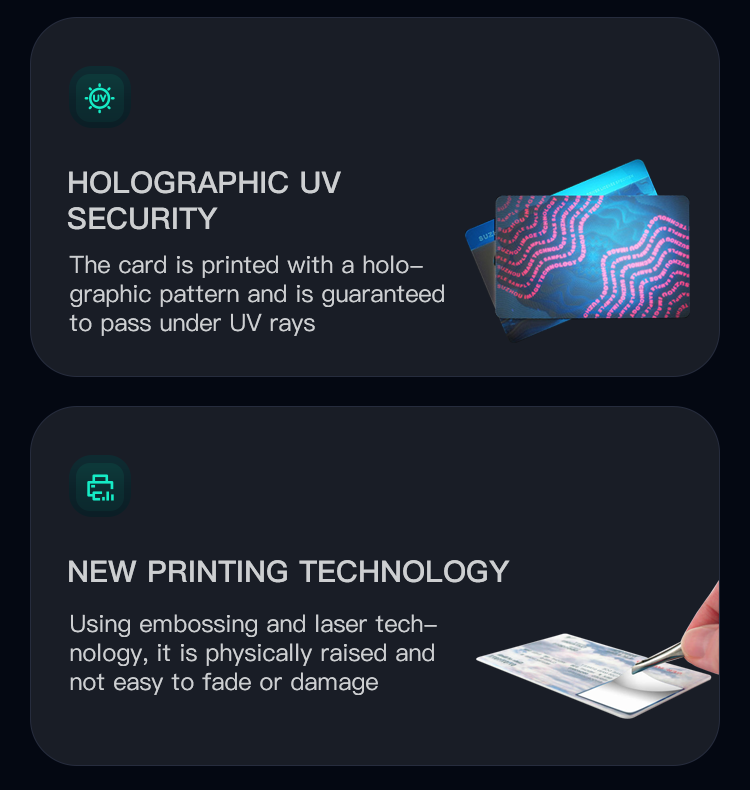In the year 2025, the issue of fake IDs continues to be a concern across various sectors. Whether it is in the context of age – restricted access to establishments like bars and clubs, or for security – sensitive areas such as government buildings and airports, the detection of fake identification documents is of utmost importance. The advent of 5G technology brings with it a new set of possibilities for enhancing the speed and accuracy of ID verification and detection processes.
The Current State of ID Verification and Detection
Before delving into the role of 5G, it is essential to understand the current landscape of ID verification and detection. Traditional methods often rely on visual inspection of identification cards, passports, or other documents. This includes checking for watermarks, holograms, and the overall quality of printing. However, with the increasing sophistication of counterfeiting techniques, these methods are becoming less reliable.
There are also more advanced methods in use, such as biometric verification (fingerprint, facial recognition, iris scan) and machine – readable zones (MRZ) on documents. Biometric data provides a more personalized and secure way of identifying an individual. The MRZ contains information that can be quickly scanned and cross – referenced with databases. But even these methods face challenges. For instance, biometric systems may have accuracy issues in certain environmental conditions, and database connectivity for cross – referencing can be slow or unreliable in some areas.

5G Technology and Its Capabilities
5G, the fifth – generation wireless technology, offers several key features that are beneficial for ID verification and detection. One of the most significant aspects is its high – speed data transfer. With peak data rates of up to 20 Gbps, 5G can transmit large amounts of data in a fraction of a second. This is crucial when dealing with biometric data, which can be quite large in size. For example, high – resolution facial images or detailed iris scans can be sent and processed much faster compared to previous generations of wireless technology.
Another important characteristic of 5G is its low latency. Latency refers to the time delay between sending a request and receiving a response. In the context of ID verification, low latency means that when an ID is scanned or a biometric sample is taken, the verification process can be completed almost instantaneously. This is especially important in high – traffic areas like airports or large events, where quick and efficient ID checks are required to avoid long queues.
5G also supports a massive number of connected devices. In an ID verification scenario, this means that multiple verification devices (such as biometric scanners, document readers) can be connected simultaneously without sacrificing performance. For example, in a large venue, dozens of ID checkpoints can be operating at the same time, all connected to a central database via 5G, ensuring seamless and concurrent verification of a large number of people.
How 5G Can Facilitate Faster ID Verification
When it comes to biometric – based ID verification, 5G can play a pivotal role. Consider facial recognition systems. With 5G’s high – speed data transfer, a high – resolution facial image captured at an ID checkpoint can be instantly sent to a remote server for comparison with a pre – stored image in a database. This comparison process, which may involve complex algorithms, can be completed much faster due to the reduced data transfer time. For example, in a busy border control point, a traveler’s facial image can be verified against a global database of known individuals within seconds, rather than the minutes it may currently take with slower networks.
In the case of fingerprint verification, 5G can also enhance the process. Fingerprint scanners can send detailed fingerprint data to a central server for analysis more quickly. This is particularly useful in security – sensitive areas where a large number of employees or visitors need to be verified daily. The low latency of 5G ensures that there is no noticeable delay between the moment a fingerprint is scanned and the moment the verification result is received.
For document – based ID verification, 5G can enable real – time cross – referencing of machine – readable zone (MRZ) data. When an ID card or passport is scanned, the MRZ data can be sent to a central database for verification against a list of valid documents. The high – speed and low – latency nature of 5G ensure that this cross – referencing occurs almost instantaneously, allowing security personnel to quickly determine if a document is genuine or fake.
5G and the Detection of Fake IDs
5G technology can also contribute to the more effective detection of fake IDs. By enabling faster data transfer, it becomes possible to access more comprehensive databases in real – time. For example, law enforcement agencies can quickly access a global database of known counterfeit ID patterns and characteristics. When an ID is presented for verification, the data from the document can be compared against this database at a much faster rate. If there are any matches or suspicious patterns, the system can immediately flag the ID as potentially fake.
In addition, 5G – enabled devices can be used to perform more in – depth analysis of ID documents. For instance, high – resolution imaging devices can capture detailed images of an ID card’s surface, including micro – printing and other security features. These images can be sent to specialized servers for analysis using advanced image processing algorithms. With 5G’s high – speed data transfer, this analysis can be completed quickly, and any signs of tampering or counterfeiting can be detected promptly.
Furthermore, 5G can support the development of more sophisticated anti – counterfeiting technologies. For example, sensors embedded in ID documents can communicate with 5G – enabled readers. These sensors can detect various parameters such as temperature, humidity, and magnetic fields, which can be used to verify the authenticity of the document. The real – time communication between the sensors and the readers made possible by 5G ensures that any anomalies can be detected immediately.
Implementation Challenges and Solutions
While the potential of 5G in ID verification and detection is significant, there are also several implementation challenges that need to be addressed. One of the main challenges is infrastructure development. For 5G to function effectively, a widespread network infrastructure needs to be in place. This requires significant investment in building 5G base stations and ensuring adequate coverage, especially in remote or hard – to – reach areas. To overcome this, governments and private companies need to collaborate on infrastructure projects. Public – private partnerships can be established to share the costs and responsibilities of building and maintaining the 5G network.
Another challenge is data security. With the increased amount of sensitive data being transmitted over 5G networks for ID verification purposes, ensuring data security is crucial. Encryption techniques need to be enhanced to protect biometric data, personal information on ID documents, and other sensitive information. Regular security audits and updates should be carried out to detect and prevent any potential security breaches. Additionally, strict access controls should be implemented to ensure that only authorized personnel can access the data.
Compatibility issues also pose a challenge. Existing ID verification and detection systems may not be compatible with 5G technology. This requires significant upgrades and retrofitting of hardware and software. To address this, standards need to be established for the integration of 5G with existing systems. Device manufacturers and software developers should work together to ensure that their products are 5G – compatible. Training programs can also be provided to security personnel and other relevant stakeholders to familiarize them with the new 5G – enabled ID verification systems.
Cost is another factor. The adoption of 5G – enabled ID verification and detection systems can be expensive, especially for smaller organizations or in developing regions. To make it more affordable, economies of scale can be achieved by promoting widespread adoption. Governments can also provide incentives such as tax breaks or subsidies to encourage organizations to invest in 5G – based ID verification solutions. Additionally, cost – effective alternatives can be explored, such as open – source software and hardware components for ID verification systems.
Finally, there may be public acceptance issues. Some individuals may be concerned about the collection and use of their biometric data or the potential for privacy violations. To address this, clear communication about the benefits and safeguards of 5G – enabled ID verification systems is essential. Privacy policies should be transparent, and individuals should have control over their personal data. Public awareness campaigns can be launched to educate people about how 5G – based ID verification can enhance security while protecting their privacy.
Common Problems and Solutions
- Slow Verification Speeds in High – Traffic Areas
Problem: In areas with a large number of people, such as concert venues or busy train stations, traditional ID verification methods can be slow, leading to long queues and delays. Biometric systems may also experience slowdowns due to the large volume of data being processed.
Solution: Implement 5G – enabled ID verification systems. The high – speed data transfer and low latency of 5G allow for faster processing of biometric data and cross – referencing of ID information. Multiple verification devices can be connected simultaneously, ensuring that a large number of people can be verified quickly.
- Inaccurate Biometric Verification
Problem: Biometric verification systems, such as facial recognition or fingerprint scanners, may produce inaccurate results in certain environmental conditions (e.g., poor lighting for facial recognition, dirty or damaged fingers for fingerprint scanners). This can lead to false positives or false negatives, causing inconvenience to individuals and potential security risks.
Solution: Use 5G to transmit high – resolution biometric data to more powerful servers for analysis. Advanced algorithms can be employed on these servers to improve the accuracy of verification. Additionally, 5G – enabled sensors can be used to detect and compensate for environmental factors that may affect biometric data quality.
- Difficulty in Detecting Advanced Counterfeits
Problem: Counterfeiters are constantly developing more sophisticated techniques to create fake IDs that are difficult to detect using traditional methods. These fake IDs may have realistic – looking watermarks, holograms, and even pass some basic machine – readable zone checks.
Solution: Leverage 5G to access real – time databases of known counterfeit patterns and characteristics. High – resolution imaging devices connected via 5G can capture detailed images of ID documents for in – depth analysis using advanced image processing algorithms. Sensors embedded in ID documents can also communicate with 5G – enabled readers to detect any signs of tampering.
- Connectivity Issues for Database Cross – Referencing
Problem: In some areas, especially remote or rural locations, the existing network connectivity may be poor, resulting in slow or unreliable database cross – referencing during ID verification. This can lead to delays and inaccuracies in determining the authenticity of an ID.
Solution: Deploy 5G networks to improve connectivity. 5G’s high – speed and reliable data transfer capabilities ensure that ID information can be quickly cross – referenced with central databases, even in areas with previously poor network coverage.
- Integration with Existing ID Verification Systems
Problem: Many organizations already have existing ID verification systems in place, and integrating 5G technology into these systems can be a complex and costly process. There may be compatibility issues between the new 5G – enabled components and the legacy systems.
Solution: Establish industry standards for the integration of 5G with existing ID verification systems. Device manufacturers and software developers should ensure that their products are backward – compatible and can be easily integrated. Training programs can be provided to IT staff to help them with the integration process.
Fake ID Pricing
unit price: $109
| Order Quantity | Price Per Card |
|---|---|
| 2-3 | $89 |
| 4-9 | $69 |
| 10+ | $66 |



